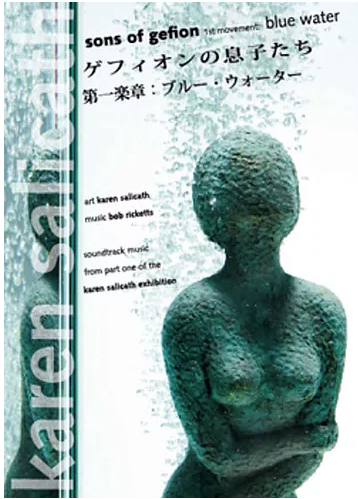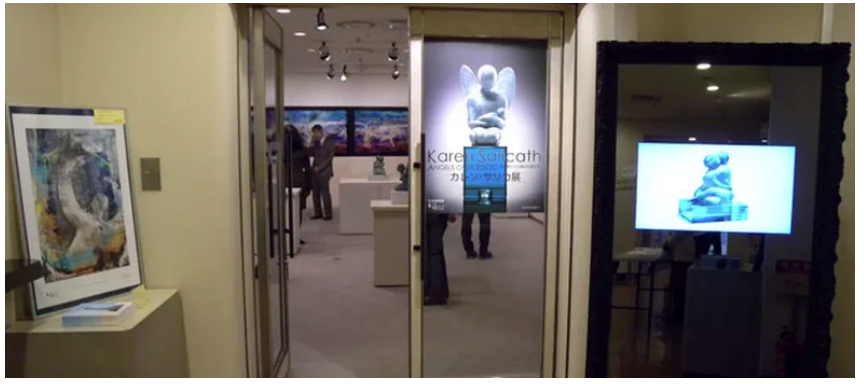Excerpts from “Karen Salicath Jamali Recognized by Marquis Who’s Who for Excellence in Artwork” Press Release, Marquis Who’s Who, 2017
Karen Salicath Jamali has been included in Marquis Who’s Who. As in all Marquis Who’s Who biographical volumes, individuals profiled are selected on the basis of current reference value. Factors such as position, noteworthy accomplishments, visibility, and prominence in a field are all taken into account during the selection process.
Recently listed in Who’s’ Who in America and Who’s Who in the World, Ms. Jamali is an award-winning artist and composer whose influences and work can be found in permanent collections around the world…With an evident passion for art, Ms. Jamali has had her artwork featured in over 100 exhibitions around the world, including at the Louvre Museum in Paris, the Museum of Modern and Contemporary art in Montreal and the Kume Museum in Tokyo. Her work is also represented in permanent collections, including the Jamali NYC Gallery in Soho, New York and the Jamali Miami Gallery in Miami. Karen Jamali has created 6 music albums and has over 250,000 listeners to her beautiful relaxing meditation piano music.
In recognition of her outstanding artwork, Ms. Jamali was the recipient of many international awards including the “Raffaello Sanzio” award and “The Beato Angelico” award from the L’Associazione Arte Italia Cultura in Italy. She won the “Nelson Mandela Prize,” “The International Human Rights Award 2016,” “The Golden Palm Award 2016,” and the “Academy Awards Oscar Award 2016” from the Costanza Foundation World Directory of Artists, Italy. Ms. Jamali was also honored with the Shakespeare Award, the Botticelli Prize, the Leonardo da Vince Prize 2016, and the Michelangelo International Prize, among many others. Looking to the future, Ms, Jamali intends to continue bringing beautiful artwork and music to the world through her talents and visions.
Full article can be found here: http://marquispressreleases.com/
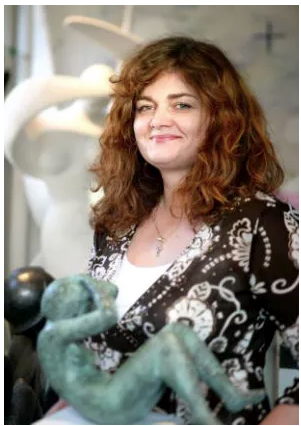
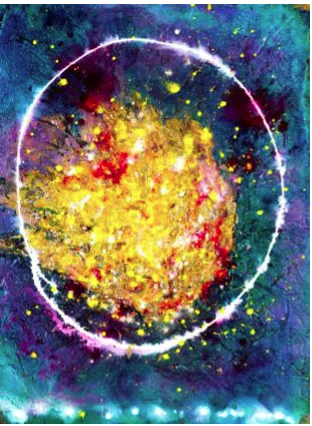
Karen Salicath Jamali by Elena Gollini
Art Critic & Journalist, Venizia, Italy
Art by Karen Salicath Jamali contains many truths. There is the truth of revelation and that discovery. Material truth and the subliminal. These truths all converge together in a mixed media painting of abstract and visionary imprint. It highlights the symbolic evocation of the author’s state of mind, which leads the knowledge. The concept of space and spatiality is managed by a global communicative equilibrium, where the linguistic style, free and spontaneous, is headed by a research in continuous transformation, deliberately indeterminate and indefinite, which always leaves emerge new forms of expression and goes to something yet unmanifested and unexpressed. In her art making, Karen gives shape and image to reach impressively emotions, penetrating into his subconscious and bringing it to light. Painting becomes a sort of window on the world, which acts as a virtual aperture, through which virtual, through which the creative ego and I will pour their artistic impulses. The painting is understood as a unique and exclusive channel, where perceptions of reality are transformed into absolute liberation and complete sensorial experience.
Karen Salicath Jamali by Salvatore Russo,
Contemporary Critic & Curator, Rome, Italy
The mythology is the true protagonist of Karen Salicath Jamali’s art. An art capable of dealing with different representative realities: Angels, unicorns, horses, men, and women. Karen adopts a language that starts from figuration to arrive at an abstract painting. In the works that represent the abstract art, the artist expresses with quick brushstrokes, the fruit of an impetuous creativity. The nuances follow fast, as equipped with a propulsive energy that expands beyond the limits of the painted surface. The shades are entwined in a continuous dialog, seemingly chaotic, in reality, well premeditated, that develop under the eye of the observer. Her figures, on the other hand, seem to live in a space other than the known space. They are placed in a new dimension no longer affected by spatial and temporal variables. With time, Salicath has developed its own creative linguistic, thus creating its own language. The emotion it binds so, to reason. From this union was born a new visual alphabet able to overcome these mental and physical imbalances to go to occupy that space in which the works reach the right expressive balance. In the cycle about Mythology, we are faced with a genuine visual romanticism. That romanticism that starts from the soul’s artist and goes directly to the heart of people. A romance that does not reside in any branch of thought, but in the genius of Karen Salicath Jamali’s mind. In this cycle, the artist speaks to us of the myth of “Leda and the Swan”, of the siren, the Pandora’s box. These are extraordinary compositions, able to remain in art history. A sculptural art, that proposed here by the artist. An art capable of triggering in the viewer, that process of deep reflection that leads him to investigate the figures represented. Figures that become bearers of profound mysteries. The great harmony representative, given by a structure characterized by the balance between full and empty, makes each sculpture an “unicum”. Something never seen before. Salicath stands as a true leader of the sculpture in the world. Its “visual arguments” make the narrated to considerable critical interest. A criticism that can only be very positive in the face of these huge masterpieces.
Salvatore Russo
In Italiano.
La Mitologia è la vera protagonista dell’arte di Karen Salicath Jamali. Un’arte capace di confrontarsi con diverse realtà rappresentative: Angeli, unicorni, cavalli, uomini e donne. Karen, adotta un linguaggio che parte dalla figurazione, per arrivare alla pittura astratta. Nelle opere che riguardano l’arte astratta, l’artista si esprime con pennellate rapide, frutto di una creatività impetuosa. Le sfumature si susseguono veloci, come dotate di un’energia propulsiva che si espande oltre i limiti della superficie dipinta. I cromatismi si intrecciano in un dialogo continuo, apparentemente caotico, in realtà ben premeditato, che si sviluppano sotto lo sguardo dell’osservatore. Le sue figure, invece, sembrano abitare in uno spazio altro rispetto a quello conosciuto. Sono collocate in una nuova dimensione non più influenzata da variabili spaziali e temporali. Col tempo Salicath ha elaborato una propria linguistica creativa, andando così a creare un proprio linguaggio. L’emozione si lega così alla ragione. Da questo connubio nasce un nuovo alfabeto visivo in grado di superare gli squilibri mentali e psichici per andare ad occupare quello spazio in cui le opere raggiungono il giusto equilibrio espressivo. Nel ciclo legato alla Mitologia, ci troviamo di fronte ad un autentico romanticismo visivo. Quel romanticismo che parte dall’anima dell’artista e arriva direttamente al cuore delle persone. Un romanticismo che non risiede in nessuna succursale di pensiero, bensì nella genialità della mente di Karen Salicath Jamali. In questo ciclo, l’artista ci parla del mito di “Leda e il Cigno”, della Sirena, del vaso di Pandora. Sono composizioni straordinarie, in grado di rimanere nella storia dell’arte. Un’arte scultorea meditativa, quella qui proposta dall’artista. Un’arte in grado di innescare nello spettatore quel processo di profonda riflessione che lo porta ad indagare le figure rappresentate. Figure che diventano portatrici di misteri profondi. La grande armonia rappresentativa, data da una struttura caratterizzata dal giusto bilanciamento tra pieni e vuoti, rende ogni scultura un unicum. Qualcosa di mai visto prima. Salicath si erge così a vera e propria caposcuola dell’arte scultorea a livello mondiale. Le sue “argomentazioni visive” rendono il narrato di notevole interesse critico. Una critica che non può che essere estremamente positiva di fronte a questi enormi capolavori.
Salvatore Russo
KAREN SALICATH by Catherine Bourlet
Professor at Sorbonne Paris; expert in judiciary technics and scientific roof art, plastic art, and history of art; art expert for the Louvre Museum in Paris, Guggenheim Museum in New York, and other museums around the world; member of AICA, Art International Critic Association
“It fascinates me that an object, which apparently is dead, such as the sculpture, can evoke so many emotions and create so much life”. These are the words of Bob Rickett – and they match the work of Karen Salicath perfectly.
Karen Salicath is a young Danish artist, sculptor and ceramicist, born in 1968 and graduated from the Danish School of Design, in Denmark, Copenhagen in 1991. Hereafter she has participated in countless exhibitions throughout the world – and has received a number of foundations and awards from the international art scene.
Her universe contains graceful sensual bodies (often feminine) carved in granite or shaped in bronze, in deep and mused silence. As an inheritor of the proud traditions of the sculpture, Salicaths work speaks both the ancient and the modern language – with elements of both.
The themes are most often inspired by the Christian, the Greek and also the Nordic mythology: The Engel, the Seraph, Leda and the Swan, the sons of Gefion. This last myth, Nordic and popular, was the main theme in a comprehensive exhibition presented at Gallery Art Front in Tokyo. Keen on creating a united room – but also communicate the story of the sons of Gefion – Karen Salicath arrayed the different sculptures in a kind of installation The Water Room to which the American musician Bob Rickett had composed an audio tape.
In this work, Salicath was interested in the four elements, which were presented emblematic in the myth about the Kings four sons in the Swedish Gefion. Especially the element of water was accentuated, recalled in the glass base of the sculptures in reduced size – and especially by the music of Bob Rickett Blue Water. Karen Salicath regards this element, water, as a symbol of emotions and love.
Simultaneously with her gallery work, Salicath has produced works for the public audience. The delicate, feminine lines, sometimes monumental, are opposed to the stiffness of the materials. The appearance of the bodies or rather their positions – both graceful and powerful – create a simple and minimalistic expression- and emotional task. More often than not the figures represent or pass on a visible and catching feeling to the viewer.
The choice to put her work at the disposal of a public audience shows the artists goodwill to make her art approachable – but also her interest in creating an interactive element between her sculptures and the busy citizen. One of the most important pillars in Salicaths art is universal: Therefore her messages are simple and the bodies impersonal in the way that detailed features of face, hands, and feet are deselected. Her forms are densified. This anonymity makes the artist create more and more abstract persons, which loose their divine and mythological qualities so that they become more human.
The pursuit of beauty is another fundamental character of her work. The lightness in the configuration, detailed conducted – translates the form of ancient heroism which she tries to transfer to her sculptures. Salicaths work melts naturally together with the subtle rhythms of the music and the lightning which stages the bodies – and give them life on their bases of glass and reflections. This kind of installation, strengthen our perception of total beauty, which is a natural step.
The art of Karen Salicath is built on past artistic and technical values, which are the Universal beauty. She has shown that she can evolve so that her work remains to make sense and she shows thereby her ability to respect the past and at the same time stay in the present. Face to face a serious and fascinating calmness shows. The stone and the bronze wrenches under the pressure of new emotions – and her inspirations are complete without time and place. Her art is modern filled with dreams, reflections and eternity.
~Catherine Bourlet
The Art of Karen Salicath: Pleasure and Enthusiasm
By Stig Åke Stalnacke, Swedish and International Art Critic, Member of Art International Critic Association.
The autumn day is cold and pale. Not at all like some days in autumn, flaming beautiful. I see no nature which blazes of autumn colors and a wind tantalize my cheek and my eyes as I walk the small distance to my mailbox.
It is a day of sadness. The affection seems so far away.
In my mailbox lies a package. It contains an art book.
I receive many art books throughout the year. Sometimes I feel so utterly tired of art. I have seen so many meaningless decorations, art without content, that I have become a bit blase.
But you never stop being curious.
You never stop chasing the stroke of tenderness in the art as well as in life.
I open this new book and suddenly the darkness, the distaste, the tiredness seem gone. Suddenly I feel the stroke of fervour, beauty, and passion in my eyes and in my heart.
Precisely that; I have met this rarity called fervor.
For a while, I experience what might be called love.
The book, this book with pictures of artworks, is a book presenting the work of Karen Salicath.
With these pictures, the hope of love once again finds a place in me. I realize that central and important things happen when humans find a place in art.
When fervour takes a place in art, miracles can happen.
Until this very day, I did not know the work of Karen Salicath. The art scene in Sweden can sometimes be quite small and smoke-filled.
To tell the truth and be quite bluntly, I have not seldom seen pictures of love in Danish art.
This is just what the sculptor – or should we say sculptures? – Karen Salicath tries to do.
Work after work I enriches by her absolute pitch for the language of fervour.
Combined with the inherent sensuality great things happen. Karen Salicaht gives an old art critic renewed comfort in the beauty and indispensability of art.
This is a time where the autumn wind haunts me and in a time where I have almost given up hope concerning the qualities of art.
It was a wonderful day.
To say that this living artist faces spirituality is not sufficient.
Which art does not strive for spirituality?
I see in her work such a direct and unconditional tenderness that I wonder how she manages to capture and manifest.
And at the same time, I realize that Karen Salicath consistently seeks to describe the beauty of human architecture and what her work does to me.
I realize what her work wants from me.
He works reminds me of things I have almost forgotten. It is the sort of art that reminds us all of something sacred and great.
That humans are grand masterpieces, miracles build for joy and love.
Love can be a big and frayed word.
As an art critic and as a writer I have sometimes used it.
Not every time I see a piece of art. No far from it. Sometimes, just once in a while, I have used it when I
have marveled at the sight of an artwork. I shiver.
That is the way it is with the art of Karen Salicath.
That is the way it is with her sculptures and her paintings.
It reminds me almost intensively and tangibly of the fact that I am human and part of a living miracle.
With simple forms and symbols, she manages to create images of human emotions, fear, dreams and instincts and yearning.
She makes her works for us to see the secrets of life and its beauty.
Words always call for limitation. An old art critic as my self would know by now.
What I have said so far also apply to her paintings.
They contain the same radiate and beautiful energy and knowledge of magic.
I would like to point out that this is about art that has given my mind and heart a wistful excitement.
When the dimensions of life reflected in the art, like noble vine and spring water it intoxicates and infatuates.
It is a small prayer to request.
Thank you Karen Salicath for this delightful enthusiasm.
~Stig Åke Stalnacke
the lasting angel
by Torben Weirup
Danish Art Critic and Editor
Humanity is the crux of the matter in the works of Karen Salicath. And it’s destiny. The basic sense of being. Given that this is hardly a unique subject among artists, one may ask what then makes her stand out among her peers.
What immediately striking is that she’s not afraid. Of being out of fashion. Of letting her works carry a sense of pathos. In them are a certain mood and an idiom not unlike that conveyed by memorial monuments. Anonymous in a way well suited for universal messages.
The sculptures of Karen Salicath are silent and grave. Her human figures are often hunched; perhaps in prayer or meditation; or apprehension and bewilderedness. Many seem weighed down. Their silent faces bowed to the ground. Only reluctantly and with effort can some of them raise their head, and then it seems as if they are gazing towards an altar in subdued anticipation.
Even when the figures are paired life isn’t easy. Embraces firsthand points to a profound togetherness and one is reminded of Plato’s concept of man and woman as originally one being, on a perpetual quest for reunification ever since separation. But alas, as the sexes unite the fusion appears suffocating and one gets the distinct impression that love has no part of it.
There are those of her figures that seem so weighed down, so devoid of hope, so as to suggest a society so stony, that its members have completely surrendered personhood and have descended into one massive barren architectural structure. And then again; there is yet hope in the works of Karen Salicath.
As the rock tumbles down the mountain, Sisyphus proceeds to drive it back up. Gabriel weeps in one of the figures, and although one should be careful in applying a Christian existential interpretation to Karen’s work, the angel is there.
There is a way out of the shadows, there is yet light in the world and that message is ever-present. As well.
~Torben Weirup
from Artis Spectrum Vol. 12.2004:
Karen Salicath’s forms are graceful stately pieces. There is a great careful simplicity and preservation of bare and minimal beauty in her sculpture. Black Lady, one of Salicath’s representational works, shows a monumental woman rising out of a smooth black granite base.
The woman is like a siren – perfect and curvaceous in the sense of heroic classical figuration. Her features are reduced to smooth graceful bronze swells of flesh. The whole figure feels unified and empowered by Salicath’s union of string materials with a monumental form. She uses the body, the “corpus” as she describes it, to build a common starting point.
Her figures embody a type of universal generality that links all people. Working with archetypical forms she builds a language that speaks to everyone. Salicath, talented across multiple sculptural mediums, graduated the Danish Design School in 1991.
She has participated in many exhibitions throughout Scandinavia and London and received numerous stipends for her work.
Karen Salicath
by Erik Meistrup, Danish art Critic
Karen Salicath is a sculptor with a sensitive feeling of the presence of elements in the figures and their internal relationship in space. A special gentle balance always exists in the interplay between the figures in her sculptures and between the single figure and us as viewers.
One could also say that Karen Salicath is working with the creation of social sculptures – social images – that weaves into the classic tradition, where excellent Danish sculptures in the 20th century have their natural place (names as Anne Marie Carl Nielsen, Kai Nielsen, Gerhard Henning, Astrid Noach and Hanne Varming). Karen Salicath builds on this Danish tradition and gives it her own distinct and personal expression, which goes directly into our present-day time. Sculpture as it is known from the long history of Egypt and especially of Greece and later of Rome deals with the human being. Man as a frame, as a god, as a being and – with the revolution in art also as a pure form. The Greek expression of form has developed since the 7th century B.C. and deals with the fact that sculpture becomes an abstract and universal expression of the human being. It is transformed into a geometric expression which had to look like a human being but at the same time be an independent aesthetic object. The statue should express the perception of the beauty of that time.
By use of elements of composition such as symmetry and repetition of lines and curves in different scales. At first, the statue was in a relaxed posture, twistings or bendings were avoided to maintain symmetry around the vertical axis.
In later periods the beauty of symmetry was combined with the action of a being. The more practical Romans gave sculpture concrete and actual expression. These expressions of form were the inheritance which Michelangelo’s point of departure in the renaissance. Later at the beginning of the 19th century, Bertel Thorvaldsen used this language of form in his statue’s with their clear outline and simplicity of composition to create a sublime ideal. This very difference between ideal and reality becomes the driving force in the modernistic development of the aesthetic form of sculpture.
Modernism meant going back to the original Greek perception of the innate abstract form in sculpture and creating a new expression of forms. The most radical being a totally abstract sculpture of pure geometrical sculpture. In the tension between classical expressions and the release of sculptural possibilities by modernism an ocean of intermediate forms and compositions emerged.
Karen Salicath’s expression of the form:
Karen Salicath stands securely in the late-modernism and therefore combines freely elements from tradition with modernistic elements, which will create the expression she seeks. In this process, she creates her own form of expression, where classical elements are used to create immediate openness and accessibility to the sculpture. It is characteristic that immediately part of the essence of sculpture can be decoded and that this essence does not consist of outer drama or descriptions of aggression or action. As one can see in the sculpture “Michael”, where the archangel has to lean on the flaming sword, which he no longer either can or will raise. The sculptures describe emotional states expressing themselves differently according to form and the surface of the material, but these are states clearly female and feministic in their
basic structure and often have exactly a shape of a woman as a central motif.
Karen Salicath not only draws on a tradition in relation to form but also on the mythological tales which have become artistic and psychological archetypes. Here are angels, mermaids and the tales from Greek mythology of love and betrayal are here experienced and placed into the form and tale of today.
Again and again, we seek something fantastic as a frame of experience and of explanation, something out of this world, to describe incredible things in life, we need big frames when we meet love in one of its many forms and are struck by muteness because the experience is larger than language.
One might also say that Karen Salicath not only uses her eyes but to the same degree registers the surrounding world with the subtle ability of social feeling of measuring oscillation, in the same way as a Richter scale measures force and scope of an earthquake.
In the sculpture “Seraf ” she creates at the same time a dancing form in the upper part with the winged arms and a quiet static form in the lower part. In the middle, the woman’s big heavy breasts shine, as in Madonna paintings from the Gothic age, and of fertility to give life peace and insight.
In one of the sculptures “Leda and the swan” Leda embrace the swan and firmly holds its wings so that it cannot fly and the erotic act is anchored to the base of the sculpture. In the same way as the erotic feeling must be anchored in love. Salicath can use a simplistic abstract expression of form which reminds you of figures from the surrealistic paintings of Dali. The head of a man arises from the stone surface of the base like an act of creation. You might also look at the figure “Lady in Bridge” bent in a bow with her private parts exposed, while her possible identity – the head – has been sunk into the underworld of the base. It is the sensitive balance or rather the invisible soft connection between human beings that Karen Salicath aims to describe – therefore you note the absence of aggression or fight. She creates the human connection in plaster, ceramics or stone either in a direct relationship between bound lovers or in the insisting demand of a single shape to be seen and accepted by the surrounding world.
Karen Salicath knows how to make the silent but strong language of inner feelings into visible images. The embracement becomes mere intense. The simple act to reach out for another person becomes joined with a strong and gentle gravity, which shows that contact will survive because of its inner will and longing. The very embracement between the lovers, between mother and child or between personalities is a common motive, which is handled from different perspectives – from even the most oppressing over total surrender to love and care and further to lightness and joy. The sculptures sometimes balance on the edge between life and death and between loneliness and togetherness. Even in the extreme, they keep strength and belief in the social brotherhood. The belief that life always contains something beautiful, something gentle.
The belief that a hand will be offered for help and support like the man ”On His Way” out in the world where the known and solid reality no longer suffices and where he, therefore, steps out into the empty air. Karen Salicath herself balances in her artistic works on the edge of the base, where she believes and hopes that the world and the expression of art shall create supporting power for the life she brings into the world through her sculptures.
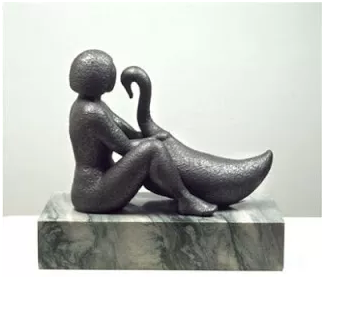
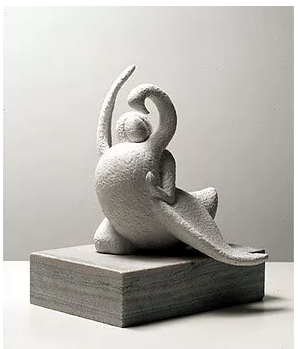
Excepts from “Vittorio Sgarbi inaugurates the exhibition Pro Biennale” Press Release, 2016
At the “Milano Art Gallery Pavilion”, Palazzo Giustinian Faccanon, celebrations for the inauguration – held on Sunday 8 May – of the “Pro Biennale” exhibition , of which Vittorio Sgarbi was the guest of honor. There is no occasion to celebrate his 64th birthday, as he says, in the “beautiful seat” of Palazzo Giustinian Faccanon.
All artists on display:
Maria Pia Severi, Gabriella Martino, Toni Zarpellon, Flavia Rebori, Luciano Tonello, Stefania Buccio Gonzato, Roberto Giacco, Margaretha Gubernale, Milvia Lauro, Alfonso Mangone, Grazia Massa, Karen Salicath Jamali, Elettra Spalla Pizzorno, Lucia Tomasi, Alba Tortorici, Stjepko Mamic, Mamic, Astrid Baenziger, Emanuele Cacciatore, Florcatia Libois, Silvana Mascioli, Giuseppe Oliva, Luca Pedrazzi, Roberto Ziranu, Lina Zizola, Giorgio Baldoni, Maria Vincenza D’Aloisio, Daniela Grifoni, Gioacchino Loporchio, Liliana Mantione Lanaro, Ernie Fisher, Nicola Pica, Anna Poerio, Dannie Praed, Anna Reber, Andrea Rizzardi Recital, Rolando Rovati, Diego Rudellin, Giuliano Soragni, Emiliano Tagliapietra, Federico Tamburri, Mauro Trentini, Valcarlo Drensi.
Full article can be found at: www.artslife.com
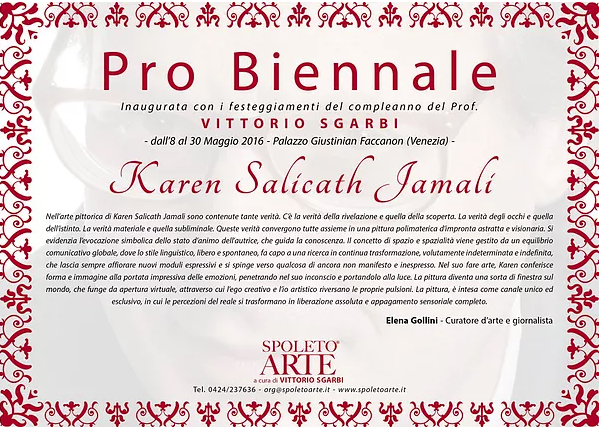
Featured as part of “Salon d’Art International Contemporain Carrousel du Louvre”
Heinz Playner, Curator of PAKS Gallery, 2015
Karen Salicath Jamali (born in 1968 in Denmark) has been experimenting for years with 25 paintings, sculptures and photographs. Her artworks has been shown in more than 100 solo and group exhibitions and are located in more than 600 private collections. Karen Salicath Jamali studied in “The Royal Danish Academy of Fine Art” and in “The School of Design in Copenhagen.” Her art has been shown in major exhibitions, including the Louvre Museum in Paris, the Museum of Modern and Contemporary Art in Montreal, Kume Museum Tokyo to International Modern Art Fair in Austria Neuberg Abbey and the PAKS Gallery. “Artworks by Karen Salicath Jamali delight with a deep mystical character. Targeted structures and colors match you can see the master talent of the artist to tell about the human world and feelings. Combination of the Christian, Greek and Norse mythology with classic and modern elements have a deep meaning and affect the viewer emotionally. The artworks exude a charming mysterious brilliance.” Heinz Playner, Curator of PAKS Gallery.
PAKS Gallery at the Hubertendorf Castle will be showing the new exhibition “Expression of the Colors” from figurative painting to photographic art to pop art. The exhibition includes the frescoes of the artist from Manhattan Karen Salicath
Full article can be found at: www.about-art-magazine.com



Excerpts from “The Still Life Collection” as part of the Exposure Awards Press Release, 2015
Photography holds power. The act of taking a photo acts as both a historical marker and a capture of time. Just as archaeologists offer hypotheses about ancient societies based on cave paintings, historians of the future will base their conjectures about us on the photography that is happening at this very moment. As technology makes our world more interconnected, the act of creation has become a universal language. This vital conversation is made vivid by photographers who push the boundaries to capture their vision and share it with the world. The photographers within the Still Life Collection, represent an important part of global dialog. It is an honor to present them here and to the world as part of the Fifth Annual Exposure Award.
Full catalog can be found here: https://issuu.com/exposureaward/docs/the_still_life_collection

Excerpts from “Venice: The exhibition ‘Pro Biennale’ at the prestigious Milan Art Gallery is the art of Karen Salicath Jamali, with the participation of Vittorio Sgarbi” Press Release, 2015
A great success and a large crowd of audience is expected for the exclusive event of the “Pro Biennale,” the exhibition set up inside the historic Venetian palace hosting the Milan Art Gallery , in Calle dei Cerchieri – Dorsoduro no. 1270, near Campo San Barnaba… The event, which is held in conjunction with the beginning of the 56th Biennale, is organized by the culture manager Salvo Nugnes, President of the Association “Spoleto Arte”.
The Danish artist Karen Salicath Jamali will participate in the prestigious initiative, with his wonderful sculptural work. His sculptures, usually in bronze or glass, are both delicate and monumental; they have as their subject the human figure, carved as an anonymous figure, impersonal and therefore universal: the sculptor’s intent is to represent the universality of the human condition. In this regard, his sculptures are devoid of an emotional and intimate dimension, which emerges from plastic matter and engages the spectator in an active and surprising way…
Full article can be found here: www.informazione.it

Excepts from “Federal President Dr. Heinz Fischer at the opening of the Neuberger Kulturtage and the “First International Modern Art Fair Austria” Press Release, About Art Magazine, 2015
Stift Neuberg. For the 39th time the opening of the Neuberg cultural days took place at the Stift Neuberg. The MAMAG Modern Art Museum, in cooperation with the PAKS Gallery, presents “First International Modern Art Fair Austria” parallel to the Neuberg cultural events. This year, the opening of the Neuberger Kulturtage took place together with the “First International Modern Art Fair Austria”. At the opening ceremony, numerous guests from politics, culture and business have entertained themselves with the artists of the “International Modern Art Fair Austria”. Federal President Heinz Fischer and Margit Fischer visited the opening of the Neuberger Kulturtage and the “First International Modern Art Fair Austria” and talked about the art works with the Pop Art artist Tanja Playner, artists Marlen Peix, Kumi Ozaki and Sameer Hazari.
Visitors to the exhibition “First International Modern Art Fair Austria” have a perfect opportunity to combine photographic art and experimental art with the forms and colors of the internationally renowned photo artist Marlene Peix (Deutschand), photographic art with a natural landscape and a classic act of the winner of the “International Modern Art Award 2015 “Janice Alamanou-Coastal (Great Britain), reduced magical motifs with elegant poetic precision of the strokes of Maria Isabel Salazar de Lince from Colombia, colorful art works with the use of mussels, the international artist Marta Melniczuk from Germany. Also to be admired are the radiant frescoes by Karen Salicath Jamali, which has held over 100 solo and group exhibitions worldwide for over 25 years and is represented in more than 600 private collections.
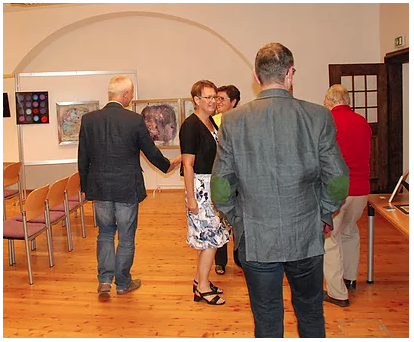
Full articles can be found at: www.about-art-magazine.com

In Villa Castelnuovo the art exhibition “The New Heirs of Jackson Pollock” Press Release, Palermo Today, 2015
From Thursday 15 to Sunday, October 18, the rooms of Villa Castelnuovo will host the event “The new heirs of Jackson Pollock” – “The new heirs of Jackson Pollock”.
A select number of Artists will exhibit their works in this prestigious art exhibition that will be curated by the international curator Salvatore Russo . Palermo will become the great protagonist of international art, crossing the Italian borders to reach new lands. 30 Artis t(Ahmad Alahmadi, Bjørbekk Anita, Bucher Franz, De Anda Alejandro, Ditot Alina, Fauttilli Serena, Goodman Pat, Gordon Antonia Pia, Grewcock Roberta, Haug Kari Elisabeth, Jaksch Christine, Klotz Roswitha, Longhi de Board Rosie, Louguet Philippe, Mansey Mary, Montoya Tatiana, Müller Chiara, O’Brien Kellianne, Poyet Laure, Ramirez Monica, Rovati Rolando, Salicath Jamali Karen, Senger Christine, Stefanescu Georgeta, Stemans Werner, Tasca Mario, Tiril, Tolli Gabriella, Van Schuppen Josée, Visentin Giorgia) they will dress up, with their paintings, the walls of Villa Castelnuovo.
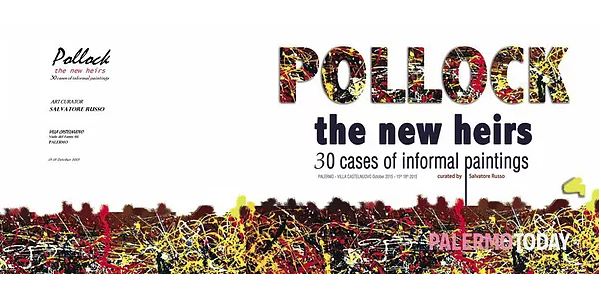
Excerpts from “Artists for the Jubilee: a New Renaissance with the Existence of Paradisiaca” Press Release, Casa Laurito, 2015
Soon, the opening of the first art exhibition with the official logo of the Jubilee Year
On the occasion of the opening of the Jubilee of Mercy, announced by Pope Francis, which will begin on December 8, 2015, many religious and institutional venues will open their doors to prestigious art exhibitions centered on the religious theme of the “Pietà”. For this important event, the most important exhibition “Artists for the Jubilee” was organized, organized by the Roman company START, already engaged in the Venice Biennale 2015, and curated by Dr. Maria Luciani. The event, which will take place with the precious collaboration of UCAI Roma and the Associazione Culturale Fondazione Omiccioli, will begin on December 3 and will end on December 13, 2015, will take place in two locations: one of the four basilicas of the capital and the second largest basilica after that of S. Pietro in the Vatican and at La Pigna in Palazzo Maffei Marescotti, formerly the Vicariate of Rome.
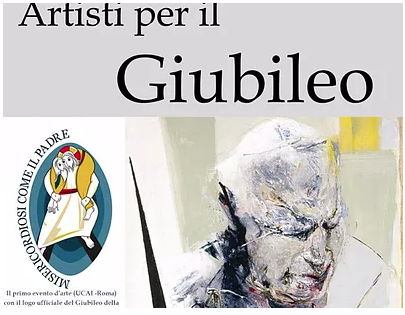
The international event, with the Official Jubilee logo will be divided into three sections: painting, sculpture and photography, and it will coincide with the opening of the Holy Door, on 13 December, at the Papal Basilica of St. Paul outside Le Mura. This year the exhibition will symbolize a dramatic shift, a new route where the refuge in paradise will be supported by figurative, abstract, informal works aimed at new pictorial canons. The whole event will focus on seeking a ” sacred “”(Model) in which Beauty and above all Purity will have a common reading. The works will be mainly characterized by clear color shades, Light will be the guide of the artist and the latter will be placed at the service of the divine message. Just as Sacred Texts have for centuries been an inexhaustible source of Art and Beauty, this exhibition will have to follow a paradigm that has as the Source Primigenian the Mystery of Death and Resurrection of Christ, His Forgiveness, His Piety. Artists will propose a Universal Art, Current and Close to Christian Needs; they will reveal their souls, reveal that they are sons of God in art, testify in jubilee year with white, silver, gold the triumph of the divine message to which we are all called.
Works on display (St. Paul’s Basilica outside Le Mura):
Alessio Serpetti, Angela Leopatri, Annamaria Volpe, Brigitte Cabell, Diego Boiocchi, Emanuela Fera, Gabriella Martino, George Tkabladze, Gianni Giannettino, Giuliana Maddalena Fusari, Karen Salicath Jamali, Leonardo Beccegato, Lidia Bobbone, Lucia Balzano, Luisella Traversi Guerra, Maria Adelaide Starring, Maria Mancuso, Mario Testa, Marisa Laurito, Mauro Martin, Michael Lam, Osvalda Pucci, Rocco Santoro, Sabrina Bertolelli, Silvio Natali, Valeria Contino, Young-Ae Yi
http://www.casalauritoformedarte.it/artisti-per-il-giubileo/
Excerpts from “Karen Salicath Jamali Exhibition of Paintings at New Faust Harrison Pianos Showroom in Fairfield, Connecticut” Press Release, Broadway World, 2014
In her most comprehensive exhibition to date in the U.S. that runs through February, Karen Salicath Jamali will present an extraordinary body of work including 50 new paintings from her Event Horizon series, plus her piano compositions, 7 Tones From Heaven.
“This exhibition, Event Horizon – 7 Tones From Heaven, started four years ago when I began to paint the Event Horizon pieces,” said Karen. “Event horizon is the place in the universe where the laws of physics cease and another reality begins. Sometime later I had an accident and I partially lost touch with reality. I could not see light, hear sound, and had difficulty speaking for two and a half years. Last Christmas, music began to come to me and I discovered I could play piano. I had to buy a Steinway from Faust Harrison and the music came together. I am thrilled to have been invited by Erica Feidner of Faust Harrison Pianos to present my artwork and music in their new showroom.”
“Faust Harrison Pianos regularly showcases the artwork of prominent local artists, and we’re excited to present the latest paintings and music by Karen Salicath Jamali at our new showroom in Fairfield,” said Irving Faust, Managing Director of Faust Harrison. Their newest showroom, in a beautifully renovated building in Fairfield, Connecticut, was designed to build upon the Faust Harrison tradition of pianos and art. “Large, open spaces, fine lighting and terrific acoustics make it an ideal new home for music and the arts. This is a new cultural treasure in Fairfield County to be enjoyed by everyone,” said Irving.
Full article can be found here: www.broadwayworld.com
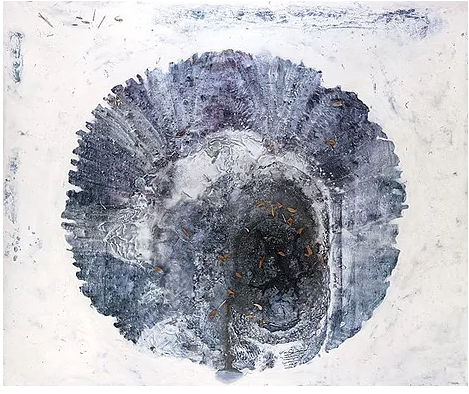
“Prince Joachim receives CARE Prize 2013” Press Release, CARE Denmark, 2013
His Royal Highness Prince Joachim will receive Wednesday, May 7, 2014 CARE Prize. At the occasion, the visual arts Mikael Melbye reveals a new portrait of Prince Joachim. After 25 years as a protector of the humanitarian organization CARE Denmark, King of the High Priest Joachim is honored for his long-standing commitment to the organization’s work. Wednesday, May 7th, at. 16.00, Prince Joachim CARE receives the prize 2013.
The CARE Award is awarded once a year and is instituted to give a little back to those people who make extraordinary efforts to support CARE’s work to strengthen some of the world’s poorest and most vulnerable people.
The CARE prize was made by sculptor Karen Salicath and was founded in 2006.
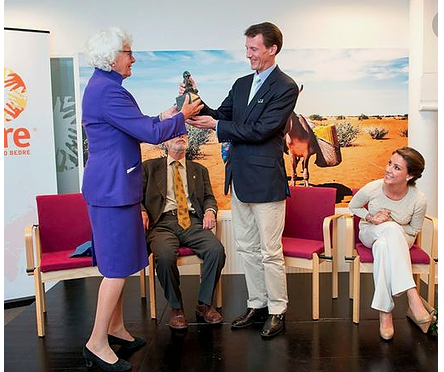
“Digitalization Award” Creation Press Release, Denmark, 2013
The statuette awarded to the winners of the Digitalization Award is called “Man in the Center” and was created by sculptor Karen Salicath.
“Man in the Center” symbolizes new possibilities and new visions and is also a great symbol for the Digitalization Award.
About Karen Salicath
Karen Salicath is educated at the Danish Design School in 1991. She has exhibited in Scandinavia, Europe, USA, China, Japan, etc.
Karen Salicath’s sculptures are characterized by being graceful, gracious and magnificent. There is a simplicity and minimalist beauty in her expression that soothes the eye and irritates the senses. Her characters contain a universality that binds all people together. She works with archetypal shapes and thus creates a language that speaks to all people.
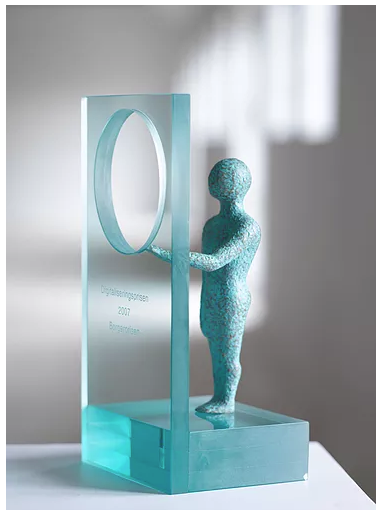
“Angels Over Tokyo & Northern Angels” Exhibition, Kume Museum, Tokyo, 2006
Danish artist Karen Salicath has built a reputation as a sculptor who produces works that induce relaxation. She has held solo exhibitions in London, New York and Athens.
The work for this exhibition, “The Sons of Gefjun”, was inspired by Gefjun, a goddess in Scandinavian mythology. When the Swedish king fell in love with Gefjun, he promised her all of the land that she could dig up in one day. Gefjun asks her four sons to help out, but they were turned into bulls. The land that they brought back is said to be the large island in Copenhagen, and there is a lake of the same size and shape in the center of Sweden. According to legend, the sons symbolize the four elements of nature: water, fire, land and air. “The Sons of Gefjun” consists of independent units for each element, and the Water Room will be on display for this exhibition. In her sculptures, water stands for emotion and friendship.
